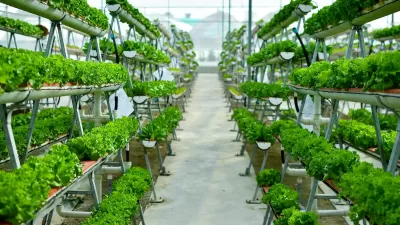To ward off crop extinctions in the event of some future catastrophe, the Svalbard Global Seed Vault opens today to receive thousands of seed samples from around the world.
"Hollowed out of a sandstone mountainside on a remote Norwegian island, a newly constructed planetary depository for seeds from key agricultural crops - dubbed the doomsday vault - is receiving its first samples this morning.
The underground, bombproof shelter, financed by the Norwegian government and located in the Svalbard Islands in the Arctic Ocean, is designed to safeguard the genetic diversity of the plants backing the world's food supply, in case political instability, nuclear war or climatic upheaval over the centuries wipes out key seed varieties from their countries of origin.
The vault has the capacity to hold a hoard of about 2.25 billion seeds, enough to preserve every important agricultural crop on Earth. But it will inter for safekeeping today an initial shipment of 100 million seeds from 268,000 varieties of wheat, barley, lentils and other crops, the beginning of a genetic trove that could come in handy for future generations.
There are currently about 1,400 collections of agricultural seeds spread around the world at plant breeding facilities, in agriculture ministries and universities, holding about 6.5 million different cultivars, or crop varieties.
The new vault has been designed to gather samples from these collections and store them in a secure facility, ensuring that if anything happens to the original seeds, backups will be available to guarantee the unique genetic resources aren't permanently lost.
Seeds sent for storage are wrapped in laminated, aluminum-foil envelopes. The vault is deep in permafrost where temperatures are typically -4 degrees to -6 degrees year-round. Special refrigeration equipment will bring the temperatures down to about -20, a level that keeps some seeds viable for centuries, others for decades.
Although the vault has been given the doomsday moniker, [Ken Richards, research manager for Agriculture Canada's genetic resources program] said he views it differently. 'I think Noah's Ark is a much better term for it,'"
FULL STORY: A doomsday vault opens doors for 100 million seeds

Alabama: Trump Terminates Settlements for Black Communities Harmed By Raw Sewage
Trump deemed the landmark civil rights agreement “illegal DEI and environmental justice policy.”

Planetizen Federal Action Tracker
A weekly monitor of how Trump’s orders and actions are impacting planners and planning in America.

The 120 Year Old Tiny Home Villages That Sheltered San Francisco’s Earthquake Refugees
More than a century ago, San Francisco mobilized to house thousands of residents displaced by the 1906 earthquake. Could their strategy offer a model for the present?

In Both Crashes and Crime, Public Transportation is Far Safer than Driving
Contrary to popular assumptions, public transportation has far lower crash and crime rates than automobile travel. For safer communities, improve and encourage transit travel.

Report: Zoning Reforms Should Complement Nashville’s Ambitious Transit Plan
Without reform, restrictive zoning codes will limit the impact of the city’s planned transit expansion and could exclude some of the residents who depend on transit the most.

Judge Orders Release of Frozen IRA, IIJA Funding
The decision is a victory for environmental groups who charged that freezing funds for critical infrastructure and disaster response programs caused “real and irreparable harm” to communities.
Urban Design for Planners 1: Software Tools
This six-course series explores essential urban design concepts using open source software and equips planners with the tools they need to participate fully in the urban design process.
Planning for Universal Design
Learn the tools for implementing Universal Design in planning regulations.
Clanton & Associates, Inc.
Jessamine County Fiscal Court
Institute for Housing and Urban Development Studies (IHS)
City of Grandview
Harvard GSD Executive Education
Toledo-Lucas County Plan Commissions
Salt Lake City
NYU Wagner Graduate School of Public Service





























